Dell XPS 13 Review
by Brett Howse on February 19, 2015 9:00 AM EST- Posted in
- Laptops
- Dell
- Ultrabook
- Broadwell-U
- XPS 13
Display
Dell offers two display choices in the XPS 13. The base model comes with an IPS 1920x1080 (Full HD, or FHD) Sharp 1420 panel, with LED backlighting of course. The upgrade is to the Sharp 1421 panel, which increases the resolution to 3200x1800 (QHD+), for 272 pixels per inch. Even 1080p on a 13.3 inch panel is a nice resolution, but the high DPI display really shines, especially in the new Windows 8 environment. Desktop apps can still have some issues with High DPI, but it is becoming less of a problem over time.
Sharp is the maker of all IGZO displays, which we have seen before in a couple of other devices such as the Razer Blade. The big benefit to IGZO (Indium Gallium Zinc Oxide) panels is they allow more light through the display, reducing the power requirements for the backlight. This generally means that we get to keep the full RGB stripe, which should help with color accuracy.
Being able to see both sets of pixels just shows how many more pixels are packed into the High DPI panel. 1080p is around 2 million pixels and 3200x1800 is 5.76 million pixels. It is a big difference and gives a big increase to clarity, but it comes with the cost of increased power usage, despite the IGZO TFT.
Dell has the displays listed as IPS (In-Plane Switching) panels on their spec sheet, and they do not seem to have any of the off-angle color shift of a VA (Vertical Alignment) design. Whatever the display type, it certainly is not TN (Twisted Nematic) so even at extreme angles there is not the loss of contrast associated with those displays. Also, you can see the anti-glare coating on the FHD pixels, which is the distortion shown on the subpixels.
To test the panels, we turn to SpectralCal’s CalMAN 5 software suite, the X-Rite i1Display Pro Colorimeter for brightness and contrast measurements, and the X-Rite i1Pro Spectrophotometer to measure the color accuracy.
One more note about the Dell displays though is that they have an auto-brightness adjustment with no way to disable it. It seems to manifest itself the most, and the most severe, when there are large contrast changes on-screen. For this reason, our automated testing for the color accuracy would not work at all because of the abrupt changes on the screen as it flashed among the various colors. This would cause the screen to go bright and dim and caused some very erroneous readings.
I was able to get around it for the color testing by manually going to on-screen color patterns, however display calibration is impossible with this brightness adjustment so that was skipped. I have contacted Dell to inquire about this issue and will give an update if they get back to me.
Update: Dell has enabled Content-Adaptive Backlight Control, which we have seen in other devices like the Nokia Lumia 930. Dell has let me know they are looking into a way to have the end user disable this feature.
First up is the brightness, contrast, and black levels.
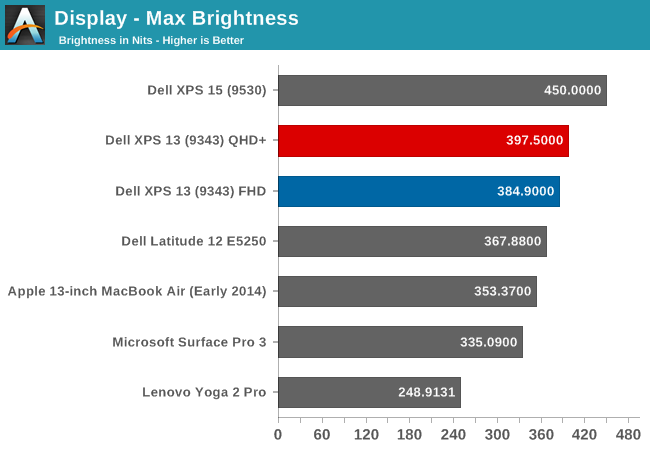
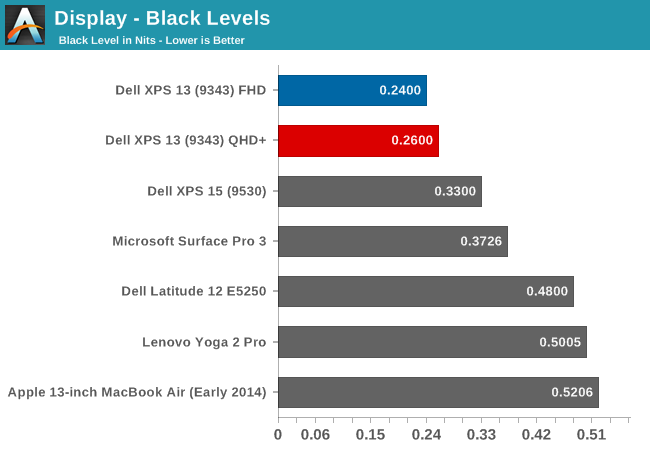
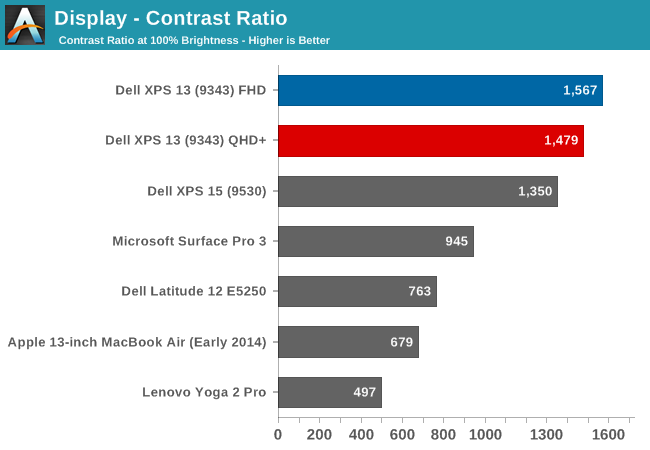
Both displays get very bright. Dell claims 400 nits brightness on the XPS 13 and we measured almost that much. Also, the black levels were very good on both displays, giving a contrast ratio close to 1500:1 on both units. Minimum brightness is around 16-17 nits on both models as well, so there is quite a bit of range on the displays to let them work on almost any situation.


On the QHD+ version, grayscale is a decent result, coming in around delta E of 3. The gamma unfortunately really drops off at the upper end of the range. The color temperature is a bit warm, and as the chart shows, the greens are a bit high. The FHD model does not fare so well, with the gamma going quite high, and the grayscale DE being almost 6.
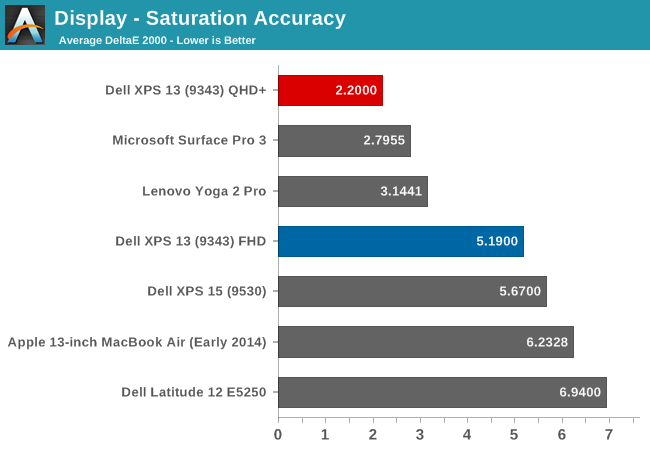
Dell does well on the saturations, with both displays being able to do the entire sRGB color space. Once again, the QHD+ model scores a lot better, with the saturation a very nice 2.2 dE, while the FHD version is closer to 5 - not an awful result, but much worse than the upgraded model.
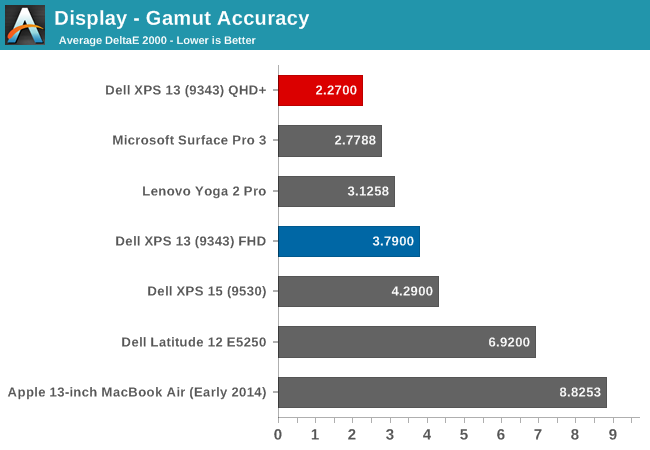
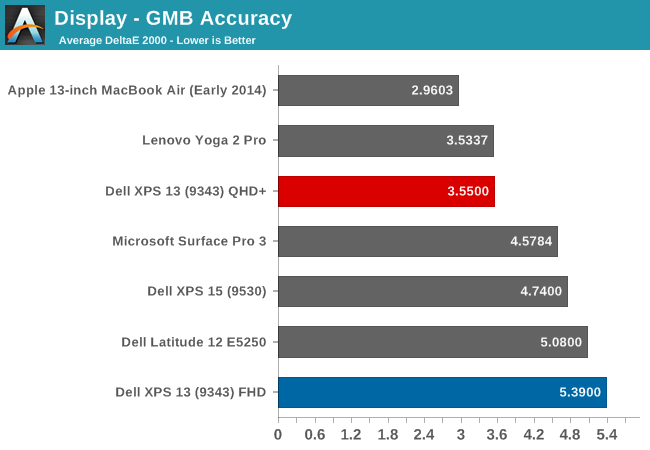
Wrapping up with the Gretag Macbeth results, again the QHD+ model does very well, with the FHD model just average. I have to note though, that even though the GMB score was very good on the QHD+ model, all of the colors that were off, with some of them around DE of 6, were the skin tones. Without calibration, anyone wanting to use this for photo editing may not much enjoy it, and with the auto-brightness issue, the calibration will not work so there is no way to see if the scores improve after calibration.
The Infinity Display is certainly one of the defining characteristics of the XPS 13, and especially with the QHD+ version the color accuracy and other characteristics are quite good. The Auto-Brightness is certainly an issue, and hopefully Dell will offer up a way to disable this either in software or the BIOS soon.


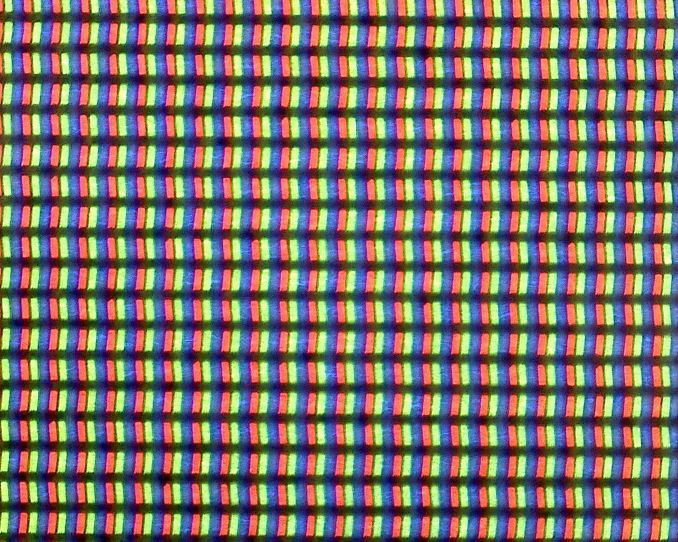
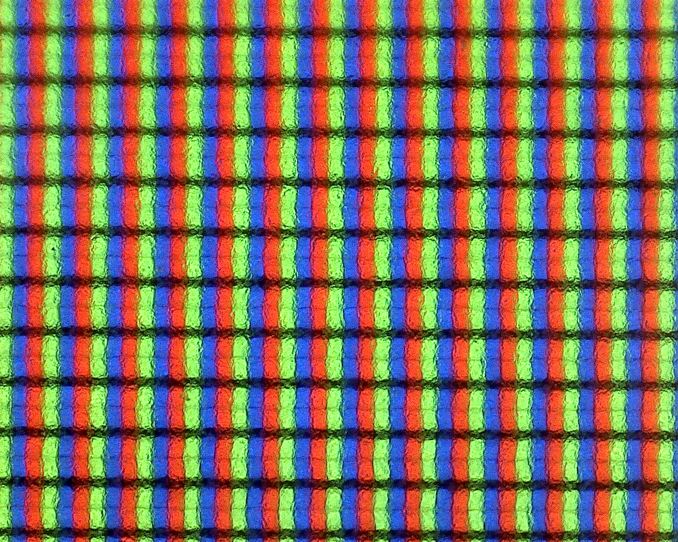
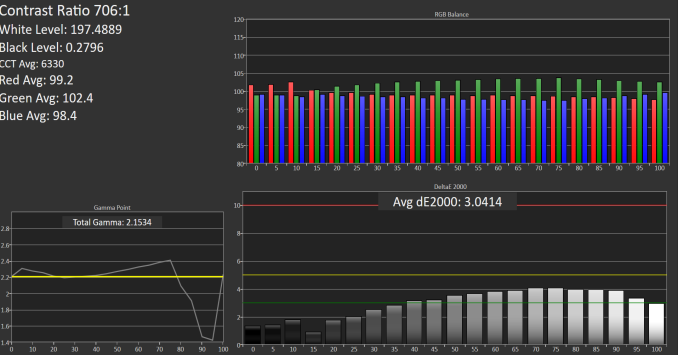
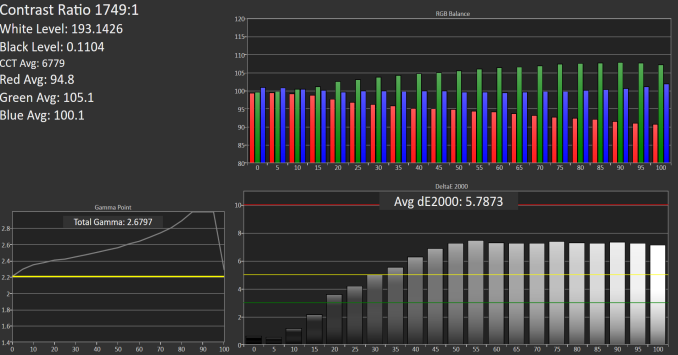
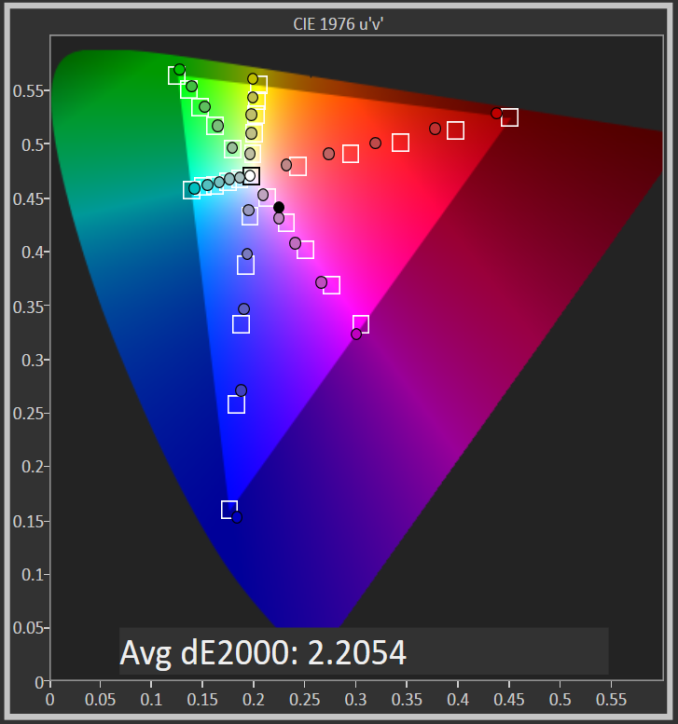

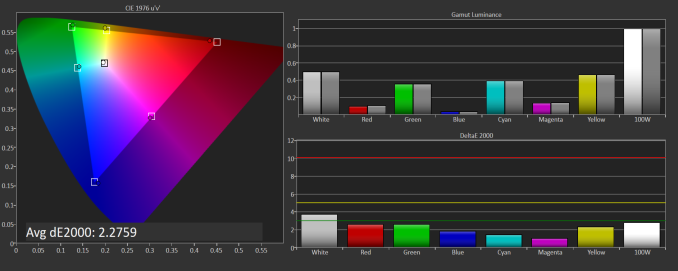
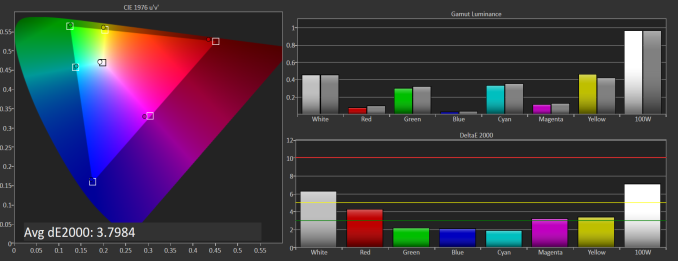

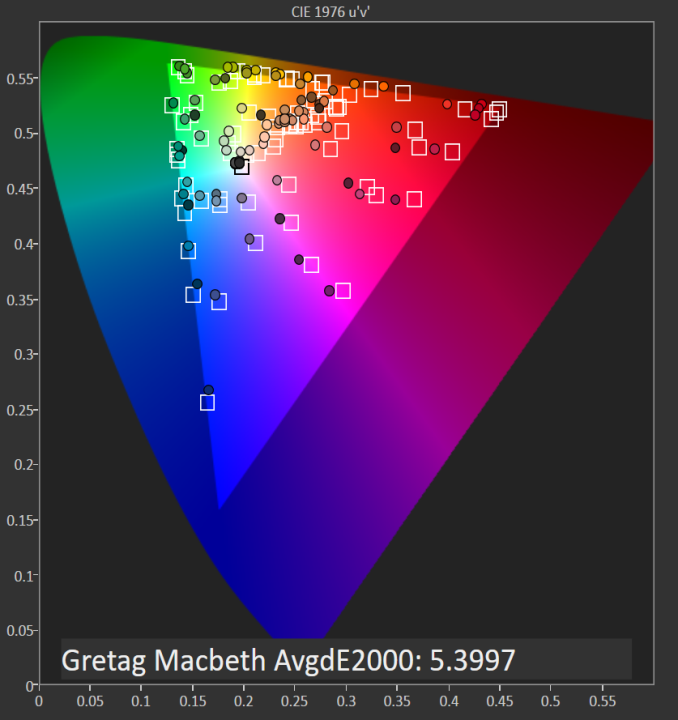








201 Comments
View All Comments
trane - Thursday, February 19, 2015 - link
This must deserve an Editor's Choice award?The only major drawback is the auto-brightness, which I'm sure will be fixed with an update soon. IINM, the original Acer S7 had a similar issue which they fixed with a firmware update. Once that is fixed, I don't think there's any real con! Yes, we would all love it to do Yoga style acrobatics, and have touch for $800, but let's be realistic. Even with the battery life hit the QHD+ option is still class leading! Dell can't fight the the current state of technology...
But the fact that these are brought up as shortcomings just tell us how great this laptop is. I mean, no one's complaining that the $1000 Macbook Air sports an archaic non-touch non-matte low-res TN panel.
Some other sites seem to be reporting much lower battery life versus Macbook Air. I wonder if that is because they are penalising the display for being brighter? Or using Chrome? Chrome has godawful efficiency right now with Hi DPI support, I'm surprised that this is not more commonly known! My laptop does 8 hours with IE, 5 with Chrome.
RT81 - Thursday, February 19, 2015 - link
Believe me, PLENTY of people are complaining about the screen on the current Macbook Air. Nobody cares about touch on a Mac, but they certainly care about the TN and low-res part.repoman27 - Thursday, February 19, 2015 - link
"The FHD model (1920x1080) arrived with a single 4GB memory module and the QHD+ version came with 2x4GB, which gives us the chance to check the performance differences between the single-channel memory and dual-channel memory."These machines are memory down (soldered RAM) configurations. There are no modules, and Lenovo would be insane to not keep both channels populated and simply use different density packages for the different models. Are you sure they're shipping single channel setups?
repoman27 - Thursday, February 19, 2015 - link
D'oh! Dell, not Lenovo.Brett Howse - Thursday, February 19, 2015 - link
Sorry I made a mistake there. It is in fact 2x2GB and the article has been updated.Hulk - Thursday, February 19, 2015 - link
Is it possible that Dell sent the laptops without the ability to change auto brightness on purpose so that the battery life tests would be extraordinarily high? I'm sure they'll be good when the update to turn auto brightness off arrives but most people will remember the hype of the original amazing battery life tests. With all due respect to Anandtech I think they should not have posted battery life tests until they auto brightness can be turned off. It's not really an apples-to-apples (no pun intended) comparison.trane - Thursday, February 19, 2015 - link
To be fair, he did check the brightness from time to time. If there were any notable changes I'm sure they would have withheld the results.Hulk - Thursday, February 19, 2015 - link
You are right and I'm not in ANY way implying there was an bias on Anandtech's part. It's a tough call. Publish the battery life to get the results out there quickly for readers with the caveat of not being able to disable auto brightness or just write "the battery life results look to be very impressive but we are not going to publish them until we can disable auto brightness." I'm just saying I would have gone with the 2nd option for two reasons. First, if with auto brightness off the results are dramatically lower than Dell pulled one over. And second, to send a message to manufacturers that if they don't allow fair comparisons due to locked software not all testing results will be published.As I wrote above it's a tough call and I respect Anandtech's decision I just disagree with it.
andrewaggb - Thursday, February 19, 2015 - link
The battery results are fantastic, I wonder how much the auto-brightness plays into it. I wonder if you pointed a bright light at the light sensor if that would force the brightness to stay at maximum.JarredWalton - Thursday, February 19, 2015 - link
FWIW, I've run tests with laptops at 100 nits before just to see how much that would help. The difference between 100 and 200 nits is usually on the order of 30-60 minutes at most, and often less. However, to get 15 hours from a 42Wh battery means that the laptop is using around 2.74W in our Light workload. If the display adaptive brightness saves 1W, battery life would drop to 11.24 hours (give or take). Which is what happens with the QHD+ panel I should note, though how much of that is the display alone and how much is caused by a higher load on RAM and CPU/GPU to handle the higher resolution is difficult to say.